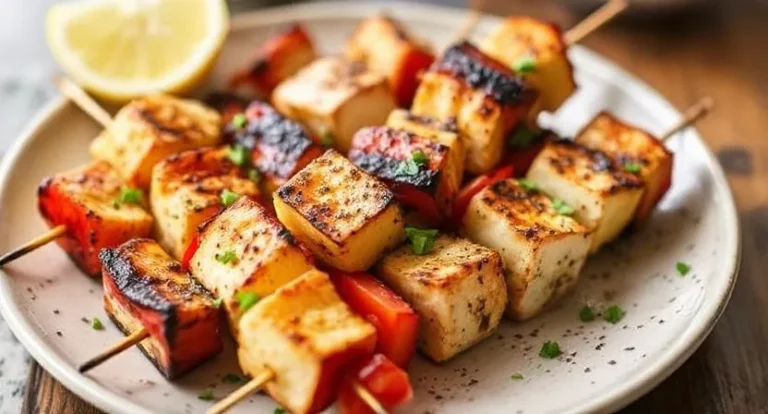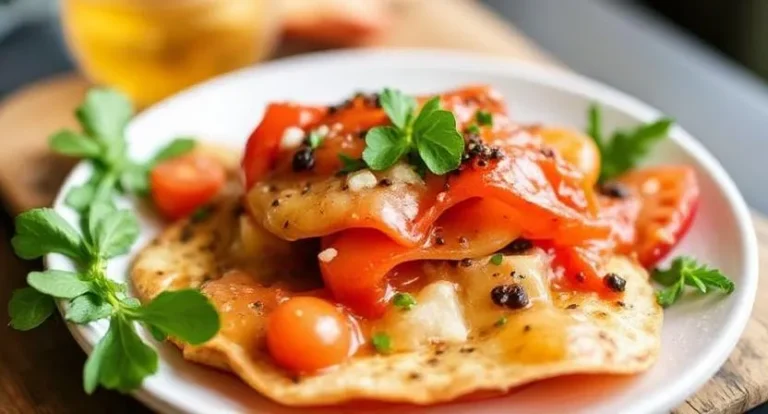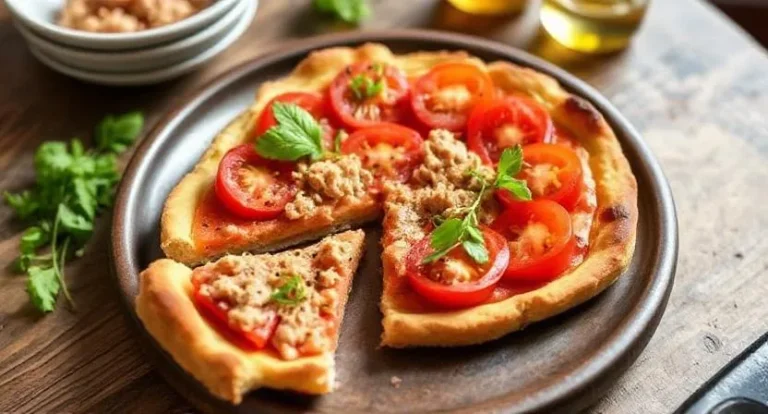Lebanese Falafel
Falafel — the golden jewel of Middle Eastern cuisine — holds a cherished spot in Lebanon’s vibrant culinary tapestry. Lebanese falafel, crafted from chickpeas and an aromatic bouquet of herbs and spices, transcends mere sustenance; it’s a soulful expression of tradition. Though the precise origins of falafel remain wrapped in mystery, it’s believed to have graced the tables of the Middle East for centuries, adapting and flourishing through generations.
Today, Lebanese falafel delights palates around the world with its irresistible crunch and savory depth. Whether cradled in a warm pita or enjoyed alone, it effortlessly bridges the gap between street food and gourmet experience. In the bustling markets of Beirut or in your own kitchen, this humble dish unites communities and ignites appetites.
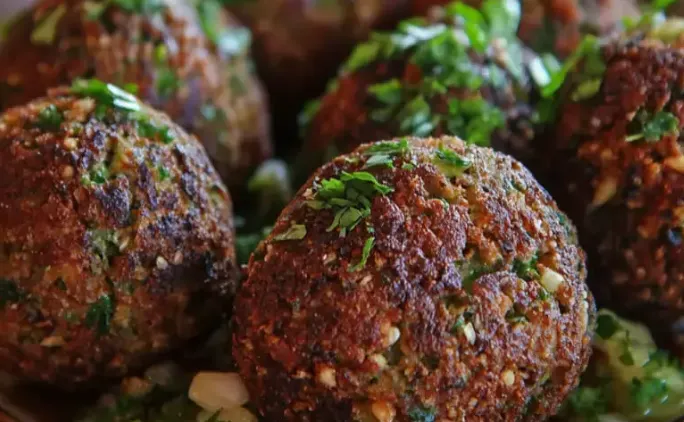
What Makes Lebanese Falafel Extraordinary
At the heart of Lebanese falafel lies a time-honored technique and an unparalleled medley of flavors. Chickpeas — soaked to tender perfection overnight — form the cornerstone, ground into a coarse, textured paste. This foundation delivers that much-coveted contrast: a crispy exterior yielding to a soft, airy center.
What elevates Lebanese falafel beyond the ordinary is its verdant infusion of fresh parsley and cilantro, bestowing a lively green hue and vibrant herbal notes. Spices such as cumin and coriander whisper warm, earthy undertones, while optional hints of cayenne lend a playful kick. A touch of baking soda ensures the falafel puffs delicately as it fries. Though deep-frying is traditional, health-conscious adaptations like baking or air-frying retain the essence without the extra oil.
Ingredients for Authentic Lebanese Falafel
- 250g dried chickpeas (no canned substitutes)
- 1 small onion, roughly chopped
- 3 cloves garlic, minced
- 1 cup fresh parsley, finely chopped
- 1 cup fresh cilantro, finely chopped
- 1 teaspoon ground cumin
- 1 teaspoon ground coriander
- ½ teaspoon salt
- ½ teaspoon baking soda
- ¼ teaspoon cayenne pepper (optional)
- 1 tablespoon flour (or chickpea flour for gluten-free)
- Oil for frying (canola or vegetable oil recommended)
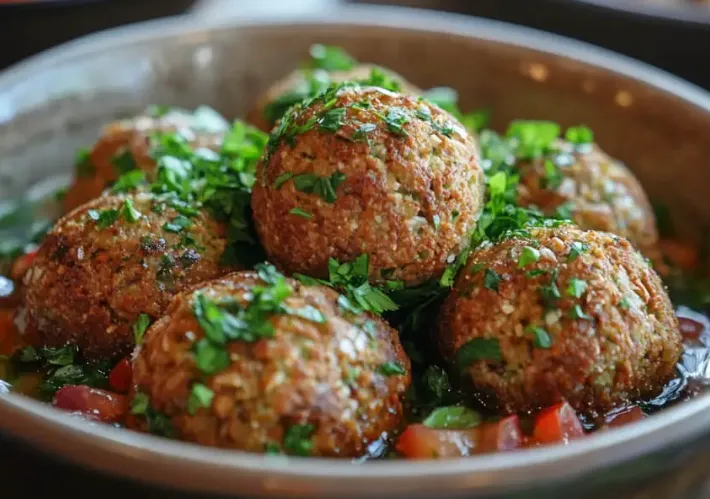
How to Create Lebanese Falafel
Soak the Chickpeas
Immerse dried chickpeas in abundant water for a minimum of 12 hours. Overnight soaking softens them, priming them for blending.
Drain and Blend
After thorough draining, pulse the chickpeas in a food processor alongside onion, garlic, parsley, and cilantro. Aim for a fine, breadcrumb-like texture.
Spice and Mix
Transfer to a mixing bowl. Sprinkle in cumin, coriander, salt, baking soda, cayenne (if desired), and flour. Blend gently until the mixture binds.
Shape the Falafel
Using a small scoop or your hands, form into balls or patties, each about walnut-sized. Arrange on a lined baking tray.
Fry to Perfection
Heat 2 inches of oil to 350°F (175°C). Fry the falafel in batches, 3–4 minutes per side, until a deep golden hue emerges.
Drain and Serve
Use a slotted spoon to lift the falafel onto paper towels. Serve hot — tucked into pita with fresh vegetables and a lavish drizzle of tahini, or simply on their own.
| Times and Servings | |
|---|---|
| Preparation Time | 15 minutes (plus soaking) |
| Cooking Time | 20 minutes |
| Total Time | 35 minutes (excluding soaking) |
| Calories | ~350 kcal per serving |
| Servings | 4 |
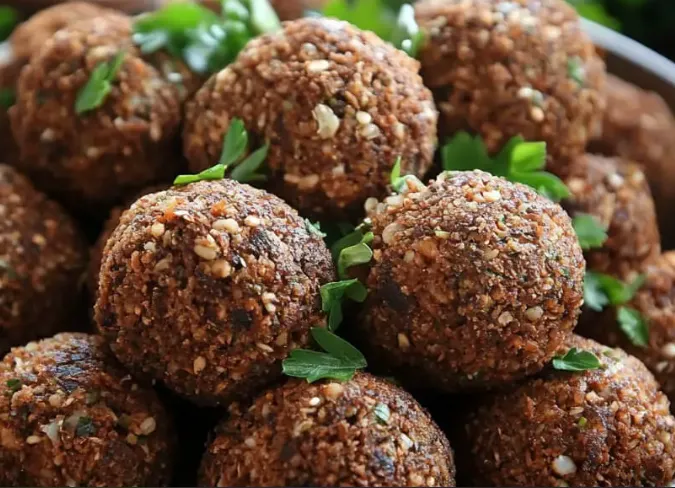
Storing Your Lebanese Falafel
Freshly fried falafel boasts unmatched crispness, but leftovers can be lovingly preserved. Allow to cool completely before storing. Refrigerate in an airtight container for up to three days. For longer storage, freeze falafel individually on a tray, then transfer to freezer bags. Reheat in a 350°F (175°C) oven for 10–15 minutes to revive that coveted crunch.
Prefer to prep ahead? Store the uncooked falafel mixture in the refrigerator for up to 24 hours, ready to fry at a moment’s notice.
Tips for Crafting the Perfect Lebanese Falafel
- Use Dried Chickpeas: Avoid canned varieties; overnight soaking is key to the perfect texture.
- Drain Thoroughly: Waterlogged chickpeas result in crumbly falafel.
- Balance Your Spices: Adjust cumin, coriander, and cayenne to your liking.
- Mind the Consistency: Blend to a coarse, even crumb — not a puree.
- Chill Before Frying: Resting the mixture for 30 minutes firms it up for easier shaping.
- Experiment Boldly: Try adding fava beans or mint for exciting flavor twists.
Creative Variations of Lebanese Falafel
- Gluten-Free Delight: Swap flour with chickpea flour or omit if the mixture binds naturally.
- Baked Goodness: Bake at 375°F (190°C) for 20–25 minutes, flipping halfway.
- Spicy Adventure: Amp up the heat with minced chilies or extra cayenne.
- Herb Garden Twist: Mix in fresh mint, dill, or even basil for herbal surprises.
- Stuffed Falafel: Tuck feta cheese or sun-dried tomatoes inside each ball for a hidden treasure.
What to Serve with Lebanese Falafel
- Pita Wraps: Load warm pita with falafel, crisp veggies, hummus, and a tahini drizzle.
- Fresh Salads: Pair with tabbouleh or fattoush for a burst of freshness.
- Dipping Sauces: Complement with hummus, yogurt sauce, or baba ghanoush.
- Pickles and Olives: Add briny pickled vegetables for contrast.
- Refreshing Drinks: Serve with mint lemonade, iced tea, or a bright white wine.
Frequently Asked Questions
Can I prepare the falafel mixture in advance?
Yes, it keeps beautifully in the fridge for up to 24 hours.
Must falafel be fried?
No — baking or air-frying is a delicious, healthier alternative.
How do I store leftover falafel?
Refrigerate for up to three days or freeze for three months.
What’s the best oil for frying falafel?
Opt for neutral oils like vegetable or canola oil with a high smoke point.
Can I use canned chickpeas?
It’s best to stick to dried chickpeas for authentic texture, but canned can be a shortcut with slight compromise.
Conclusion
Lebanese falafel isn’t just a meal; it’s a symphony of culture, history, and flavor wrapped into one crunchy, herbaceous bite. Whether you’re an intrepid first-timer or a lifelong falafel aficionado, this dish invites endless innovation and personalization.
Dive fearlessly into the craft, experiment with spices and fillings, and savor the vibrant spirit of Lebanon with every golden mouthful. Share generously — because few things in life are as satisfying as a platter of homemade falafel shared among friends.

